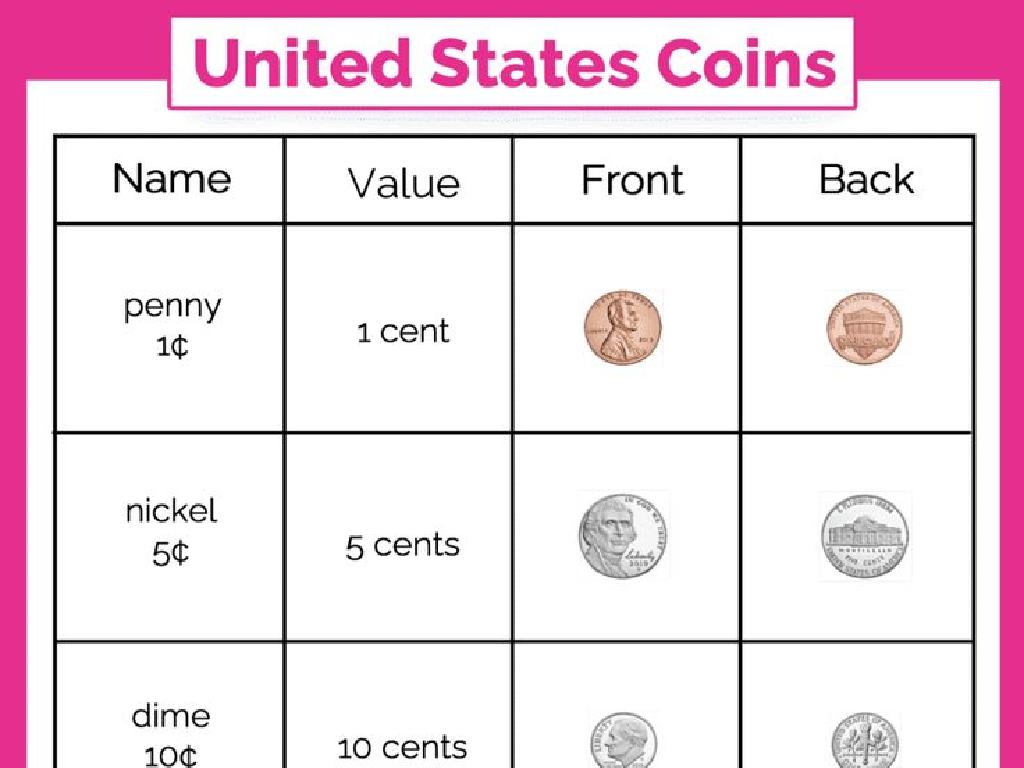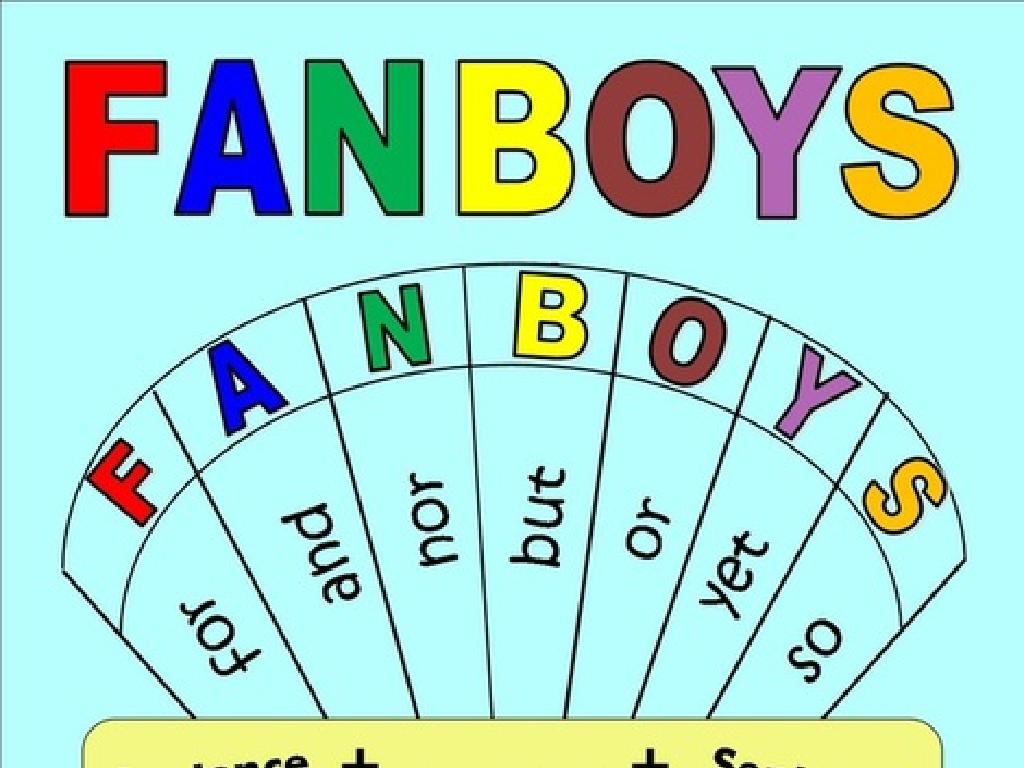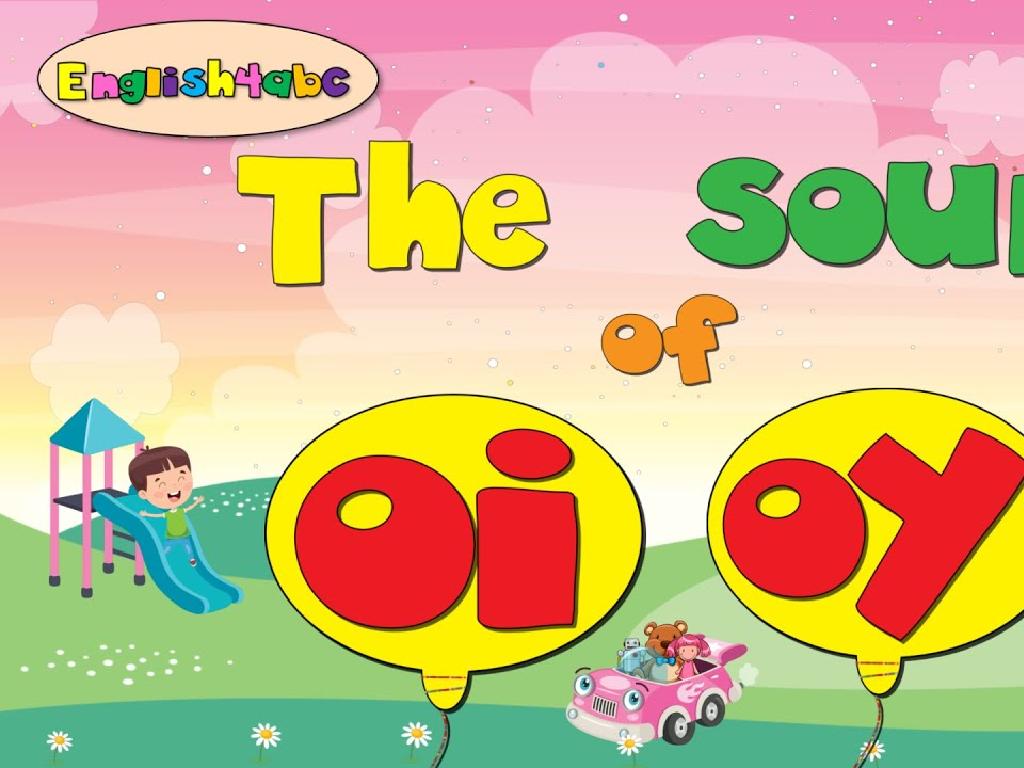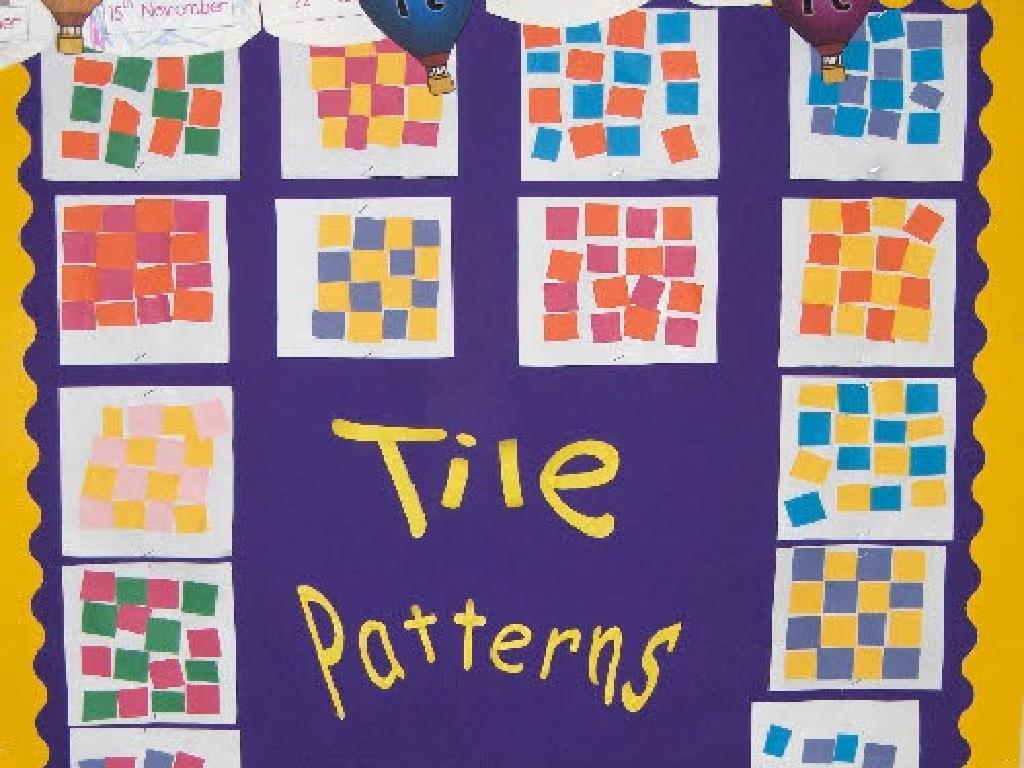Classify Changes To Earth'S Surface
Subject: Science
Grade: First grade
Topic: Earth Events
Please LOG IN to download the presentation. Access is available to registered users only.
View More Content
Welcome to Earth Events!
– Earth’s surface is always changing
– Mountains, valleys, and beaches can all change
– Daily changes we can observe
– Notice small changes like cracks or new plants
– Become Earth detectives
– Use your senses to find clues about Earth
|
This slide introduces first graders to the concept that Earth’s surface is not static but is constantly changing. Explain that large changes, like mountains forming, take a very long time, while smaller changes can happen daily. Encourage the students to be observant of their environment and to look for signs of these changes, such as new plant growth or soil erosion. This will help them understand the dynamic nature of Earth. Engage the students by asking them to be ‘Earth detectives,’ using their senses to explore and gather ‘clues’ that tell the story of how Earth is changing every day.
Exploring Earth’s Surface
– Earth’s surface: our planet’s skin
– Like our skin, it has different features
– It includes mountains, valleys, plains
– Examples: Rocky Mountains, Grand Canyon, Great Plains
– Changes happen over time
– We’ll learn how these changes occur
– Changes can be fast or slow, like landslides or erosion
|
This slide introduces students to the concept of Earth’s surface and its various features. It’s important to explain that the surface of Earth is like the skin of an apple – it’s the part we see and interact with. Highlight the diversity of the surface by mentioning familiar examples of mountains, valleys, and plains. Emphasize that these features can change, sometimes quickly due to events like earthquakes or slowly through processes like weathering and erosion. Use simple language and relatable comparisons to help first graders grasp these concepts. In the next part of the lesson, plan to explore specific examples of how Earth’s surface can change.
Slow Changes to Earth’s Surface
– Seeds grow into trees slowly
– Like an acorn becoming a big oak tree
– Mountains and valleys change over time
– It can take millions of years for these to form
– These changes are not quick
– Earth’s surface is always changing
|
This slide introduces the concept of slow changes to Earth’s surface, which is an important aspect of understanding Earth events. Emphasize to the students that not all changes happen quickly; some take a very long time, such as a seed growing into a tree or the formation of mountains and valleys. Use the example of an acorn growing into a large oak tree to illustrate the slow but steady growth that occurs in nature. Explain that the shaping of mountains and valleys is a process that happens over millions of years due to movements of the Earth’s crust. Encourage students to think about how the landscape around them might have looked a long time ago and how it might change in the future.
Fast Changes to Earth’s Surface
– Volcanoes change land quickly
– A volcano is a mountain that opens downward to a pool of molten rock below the surface of the earth.
– Eruptions happen fast
– When pressure builds up, eruptions can happen suddenly!
– Land changes after eruption
– The land can be covered with lava and ash, creating new shapes and forms.
|
This slide introduces the concept of rapid geological changes, specifically focusing on volcanoes as an example. Explain to students that some changes to Earth’s surface are slow, like mountains forming, while others are fast, like a volcano erupting. Use simple terms to describe how the eruption of a volcano can quickly alter the landscape by spewing out lava and ash. Emphasize the speed and suddenness of these events. You can demonstrate this with a simple experiment using baking soda and vinegar to simulate an eruption. This will help students visualize and understand the concept of fast changes to Earth’s surface.
How Weather Changes Earth’s Surface
– Weather shapes the land
– Rain can overflow rivers
– Heavy rain can make rivers flood, altering the landscape.
– Wind moves sand and rocks
– Strong winds can push sand and rocks, changing their location.
– Observing weather effects
|
This slide aims to teach first graders about the impact of weather on Earth’s surface. Start by explaining that weather isn’t just about what we feel; it also has the power to change the land we live on. Discuss how rain can lead to rivers overflowing, which can change the shape of the land by causing floods. Then, talk about how wind can move sand from one place to another, like in a desert. Encourage students to think of times they’ve seen weather change the land, such as puddles forming after rain or leaves being blown by the wind. This will help them connect the concept to their experiences.
Humans Change Earth’s Surface
– Building roads and houses
– People construct homes and paths altering the landscape.
– Planting gardens
– Growing plants and flowers in soil we till.
– Digging holes for pools
– Creating large pits for water to swim in.
– How we change the land
|
This slide aims to teach first-grade students about the various ways humans can alter the Earth’s surface. Start by explaining that the ground they walk on and play on can be changed by people. For example, where there was once dirt, we can build a road or a house. Encourage them to think about their own homes and the roads they travel on to school. Discuss how planting a garden changes the color and shape of the Earth’s surface with the addition of plants and flowers. Explain that when we dig into the Earth to make swimming pools, we are creating new spaces that were not there before. Use simple language and relatable examples to help them understand how our actions have a direct impact on the environment. Ask the students if they have seen or participated in any of these activities to make the lesson interactive.
Class Activity: Earth Detective
– Become Earth detectives today!
– Observe changes to Earth’s surface
– Look for cracks, holes, or new plants
– Draw a change you find outside
– Use your creativity in your drawing
– Share your findings with the class
|
This activity is designed to engage students with the practical aspect of science by observing their immediate environment. Take the students outside and allow them to explore the schoolyard or nearby park, looking for evidence of changes to the Earth’s surface such as erosion, plant growth, or man-made changes. Provide them with drawing materials and encourage them to illustrate one change they observe. Back in the classroom, facilitate a discussion where each student presents their drawing and describes the change they found. This will help them understand the concept of Earth’s changing surface in a tangible way. Possible variations of the activity could include group work, creating a collective mural of their findings, or even starting a class ‘Earth Change’ journal where they can continue to add observations throughout the year.






